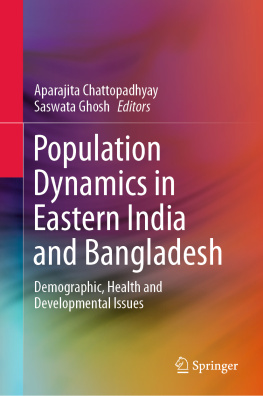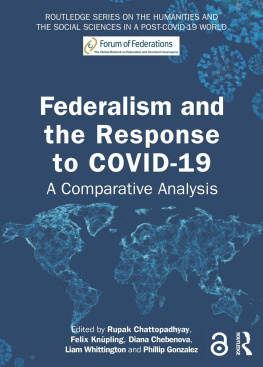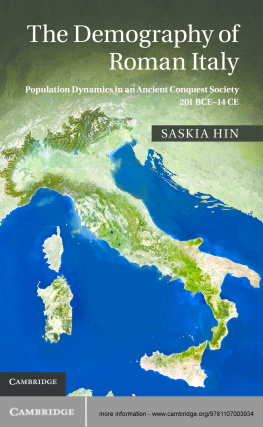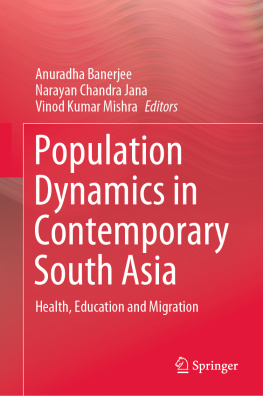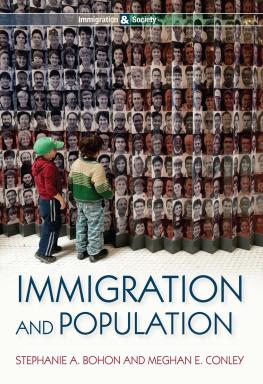Aparajita Chattopadhyay - Population Dynamics in Eastern India and Bangladesh: Demographic, Health and Developmental Issues
Here you can read online Aparajita Chattopadhyay - Population Dynamics in Eastern India and Bangladesh: Demographic, Health and Developmental Issues full text of the book (entire story) in english for free. Download pdf and epub, get meaning, cover and reviews about this ebook. year: 2020, publisher: Springer Nature, genre: Politics. Description of the work, (preface) as well as reviews are available. Best literature library LitArk.com created for fans of good reading and offers a wide selection of genres:
Romance novel
Science fiction
Adventure
Detective
Science
History
Home and family
Prose
Art
Politics
Computer
Non-fiction
Religion
Business
Children
Humor
Choose a favorite category and find really read worthwhile books. Enjoy immersion in the world of imagination, feel the emotions of the characters or learn something new for yourself, make an fascinating discovery.
- Book:Population Dynamics in Eastern India and Bangladesh: Demographic, Health and Developmental Issues
- Author:
- Publisher:Springer Nature
- Genre:
- Year:2020
- Rating:5 / 5
- Favourites:Add to favourites
- Your mark:
- 100
- 1
- 2
- 3
- 4
- 5
Population Dynamics in Eastern India and Bangladesh: Demographic, Health and Developmental Issues: summary, description and annotation
We offer to read an annotation, description, summary or preface (depends on what the author of the book "Population Dynamics in Eastern India and Bangladesh: Demographic, Health and Developmental Issues" wrote himself). If you haven't found the necessary information about the book — write in the comments, we will try to find it.
Aparajita Chattopadhyay: author's other books
Who wrote Population Dynamics in Eastern India and Bangladesh: Demographic, Health and Developmental Issues? Find out the surname, the name of the author of the book and a list of all author's works by series.
Population Dynamics in Eastern India and Bangladesh: Demographic, Health and Developmental Issues — read online for free the complete book (whole text) full work
Below is the text of the book, divided by pages. System saving the place of the last page read, allows you to conveniently read the book "Population Dynamics in Eastern India and Bangladesh: Demographic, Health and Developmental Issues" online for free, without having to search again every time where you left off. Put a bookmark, and you can go to the page where you finished reading at any time.
Font size:
Interval:
Bookmark:
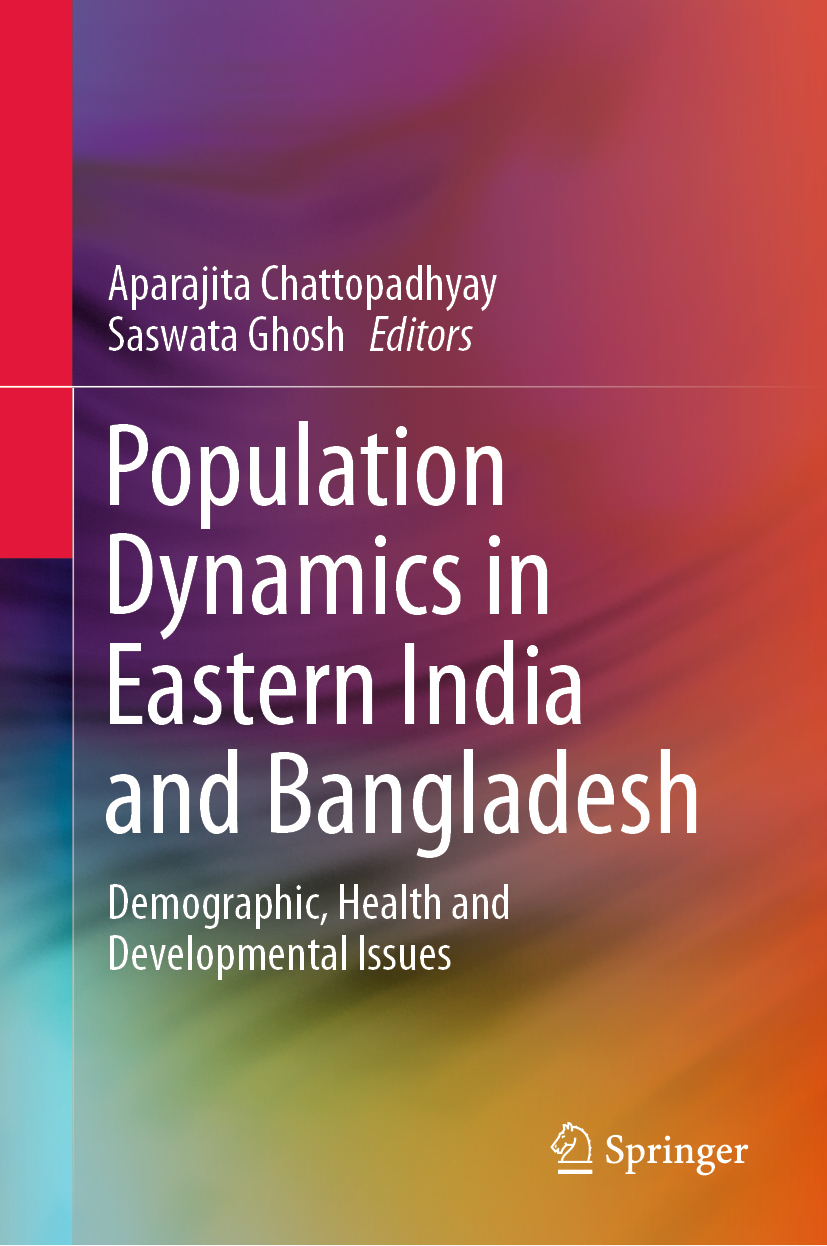

This Springer imprint is published by the registered company Springer Nature Singapore Pte Ltd.
The registered company address is: 152 Beach Road, #21-01/04 Gateway East, Singapore 189721, Singapore
Professors Chattopadhyay and Ghosh have done social scientists and the demographic community a tremendous service by inspiring and leading the development of this volume. The central premise of this bookthat demographic patterns and trends are best illuminated by an understanding of history, ideology, culture, social structure, economic systems and political institutionsis thoughtful, deep and imaginative. It is also well borne out by the 25 chapters that comprise this book. The chapters span a wide set of topics, ranging from fertility preferences and behaviour, to migration and urbanization, to public health and nutrition. Most importantly, all of the chapters are built on a detailed understanding of the long-term history of Greater Bengal, which pertains to the east Indian states of Assam, West Bengal and Tripura to the nation of Bangladesh. Given the nature of demographic data, which relies heavily on national boundaries for purposes of collection, reporting and analysis, this books focus on Greater Bengal as the central geographical construct to study is certainly challenging. But adopting this approach is sufficiently natural and compelling, both analytically and empirically, to justify assuming this burden. Given the linguistic and cultural similarities of eastern India and Bangladesh, in addition to their common historical experiences, this book conveys the feeling of a natural experiment, in which the influences are identified of political, social and economic institutions and forces on such key demographic indicators as fertility, mortality, morbidity, migration, urbanization and gender equity.
This book is multidisciplinary, spanning several fields, including demography, history, economics, politics and sociology. It presents a cross-disciplinary approach to the main issues facing the Greater Bengal region, with perspectives from all of the aforementioned fields. Furthermore, this book embodies a strong blend of research methods, including statistical analyses, case studies, spatial models and ethnographic analyses.
I admire the co-editors for their inspired framing of this book. I also admire them for their energy and resourcefulness in managing to convene such a formidable assembly of talent and to see the project through to completion. And I admire the editors and the authors for their individual and collective academic prowess in achieving the remarkable goal of demonstrating the utility of deviating from the usual choice of national political jurisdictions for studies of the nature, determinants and consequences of a wide range of demographic trends and patterns. This book reflects input from an unusually diverse group of academics, and I would hope that their engagement in this pioneering and remarkable undertaking was a powerful intellectual bonding experience and a sufficiently rewarding one to crystallize and sustain a new scholarly community.
In the end, the arguments and evidence in this book dispel the view that demography is destiny. By showing that population dynamics in Greater Bengal were not set in stone and that the implications of population dynamics for social and human development are also complex and malleable, this book casts doubt on the oft-quoted view that the social, political and economic fabric of a community is fundamentally determined by the size, growth and structure of its population.
This book is replete with academically interesting and practically important findings on population dynamics and their implications for social and economic development in eastern India and Bangladesh. It is a foundational contribution to the demographic literature that will repayhandsomelythe time it takes to assimilate and integrate the interesting and myriad findings contained in this hefty volume.
Existing literature on demographic transition in Bangladesh and West Bengal is largely ahistorical and is generally afflicted with its narrow focus on isolated or immediate causes rather than taking an over-arching view of long-term changes. After all, language, religion and political history have been important determinants for shaping societies undergoing the transition. This book is unique in its approach, in culling research papers based on the two Bengals or generally based on the Bengali-speaking population, and thereby throwing light on the historical and current demographic and development issues. Along with main demographic themes, this book will include some interesting cases based on area-specific micro-studies. This is perhaps the first initiative that compiled original research articles from this unique space that has many similarities yet which are geographically distinct in their policy approach and current developmental scenario. Integration of research is necessary to understand the diversity of such seemingly similar yet distinct geographical space.
This book highlights historical perspective and current population issues of Bengali-speaking states of India (i.e. West Bengal, Tripura, Assam or eastern India) and Bangladesh. Earlier, this region as a whole was referred to as the Bengal province with parallel language, culture, behaviour and ideology. Such binding parameters still remain strong, cutting across the international border. This Bengali space which is quite distinctive in its demographic and gender aspects is less explored by population scientists within any comparative analytical frame. Thus, the book explains the core population dynamics (fertility, mortalitymorbidity, migration and development) of Greater Bengal, using latest data, case studies and experimental data of small areas. The aim of this book is to help reshaping and framing social, developmental and health policies and encouraging original research in general. This book encompasses historical demography, fertility, mortality, contraception, son preference, development and inequality, health and morbidity, nutrition, gender issues, migration, urbanization and environment of eastern India and Bangladesh. It can help understanding several issues that are less researched and have thus remained unanswered. Series of questions that the study entails has been put forth as follows: historically what has had been the similarities and differences in demographic patterns and trends between Eastern and Western Bengal? What are the reasons for the rapid fertility decline in this Bengali-speaking space that otherwise didnt meet the standard preconditions of fertility transition? What factors, emanating from religious differentials, contributed to influencing fertility levels among the Bengalis? Do Bengalis have preference for son? How does son preference affect the behavioural practices like the contraception use? Factoring in the well-known cultural affiliations and egalitarian attitude among the Bengalis, how far has that translated into influencing the womens health care? How does surrogacy work? Does economic inequality play any role in determining nutrition among this population? How fast is the land use cover in Kolkata changing and how is it related to population growth? What about cross border migration from Bangladesh to West Bengal and Assam?
Font size:
Interval:
Bookmark:
Similar books «Population Dynamics in Eastern India and Bangladesh: Demographic, Health and Developmental Issues»
Look at similar books to Population Dynamics in Eastern India and Bangladesh: Demographic, Health and Developmental Issues. We have selected literature similar in name and meaning in the hope of providing readers with more options to find new, interesting, not yet read works.
Discussion, reviews of the book Population Dynamics in Eastern India and Bangladesh: Demographic, Health and Developmental Issues and just readers' own opinions. Leave your comments, write what you think about the work, its meaning or the main characters. Specify what exactly you liked and what you didn't like, and why you think so.

